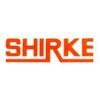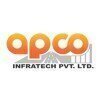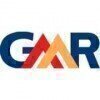Filter interviews by
Kcc Buildcon Structural Design Engineer Interview Questions and Answers
Kcc Buildcon Structural Design Engineer Interview Experiences
1 interview found
I applied via Approached by Company and was interviewed before May 2023. There was 1 interview round.
(1 Question)
- Q1. How will you design well steining in well foundation
- Ans.
Well steining in well foundation is designed by considering the soil conditions, water table level, and load requirements.
Evaluate soil conditions to determine the type and depth of well steining needed
Consider the water table level to prevent water seepage into the well
Design the well steining to withstand the expected loads and forces
Use materials such as concrete, steel, or timber for constructing the well steining
E...
Top trending discussions






Interview questions from similar companies

Structural Design Engineer Interview Questions & Answers
B. G. Shirke Construction Technologyposted on 6 Aug 2022
I applied via Naukri.com and was interviewed in Feb 2022. There were 3 interview rounds.

(1 Question)
- Q1. SFD BMD and technical questions on IS codes
(1 Question)
- Q1. Previous experience and job profile discussion
Interview Preparation Tips

Structural Design Engineer Interview Questions & Answers
Aarvee Associatesposted on 27 Nov 2021
I applied via Approached by Company and was interviewed before Nov 2020. There were 4 interview rounds.
Interview Questionnaire
2 Questions
- Q1. Personal inetrview about ourself
- Ans.
I am a detail-oriented and driven individual with a passion for structural design engineering.
I have a Bachelor's degree in Civil Engineering and a Master's degree in Structural Engineering.
I have experience working with various software programs such as AutoCAD, Revit, and SAP2000.
I am skilled in analyzing and designing structures such as buildings, bridges, and tunnels.
I am a team player and enjoy collaborating with ...
- Q2. Technical interview as from coral parameters
Interview Preparation Tips

Senior Structural Engineer Interview Questions & Answers
Apco Infratechposted on 18 May 2024
I applied via Naukri.com and was interviewed in Apr 2024. There was 1 interview round.
(5 Questions)
- Q1. What is favourable zone in RCC
- Ans.
Favourable zone in RCC refers to the region of a reinforced concrete member where the concrete is in compression and the steel is in tension.
Favourable zone is the area where the concrete is able to resist compressive forces effectively.
It is typically located at the top of a beam or slab, where the bending moment is highest.
In this zone, the steel reinforcement helps to resist tensile forces, while the concrete resist...
- Q2. What is lap length
- Ans.
Lap length is the length of overlap between two reinforcing bars in a concrete structure to ensure proper transfer of loads.
Lap length is important for ensuring the continuity of reinforcement in concrete structures.
It is typically specified in building codes and design standards.
The lap length required depends on factors such as the diameter of the bars, concrete strength, and design loads.
For example, in a beam, the ...
- Q3. Type of lapping in reinforcement
- Ans.
Lapping in reinforcement involves overlapping two reinforcement bars to ensure continuity and strength in the structure.
Lapping is commonly used in construction to connect two reinforcement bars together.
The length of the lap varies depending on the design requirements and the type of reinforcement used.
Proper lapping ensures that the load is transferred effectively between the bars.
Examples of lapping include lap spli
- Q4. Role of bearing in bridges
- Ans.
Bearings in bridges help distribute loads and allow for movement due to temperature changes and settlement.
Bearings help distribute the loads from the superstructure to the substructure of the bridge.
They allow for movement of the bridge deck due to temperature changes, wind forces, and settlement of the foundation.
Bearings help reduce stress on the bridge components and prevent damage.
Common types of bearings used in ...
- Q5. Types of expansion joint
- Ans.
Types of expansion joints include slip joints, bellows joints, and modular joints.
Slip joints allow for movement in one direction only
Bellows joints accommodate movement in multiple directions
Modular joints are made up of separate components that can be replaced individually

I applied via LinkedIn and was interviewed in Feb 2024. There were 2 interview rounds.
(2 Questions)
- Q1. What is difference between static and dynamic analysis
- Ans.
Static analysis deals with loads that do not change over time, while dynamic analysis considers loads that vary with time.
Static analysis is used to determine the effects of loads that do not change over time, such as dead loads and live loads.
Dynamic analysis considers loads that vary with time, such as wind loads, seismic loads, and vibrations.
Static analysis is simpler and less computationally intensive compared to ...
- Q2. How to perform spectral fatigue analysis
- Ans.
Spectral fatigue analysis is performed by calculating the stress response of a structure to dynamic loads over a range of frequencies.
Determine the dynamic loads acting on the structure
Calculate the stress response of the structure using spectral methods
Analyze the stress response at different frequencies to assess fatigue damage
Consider factors such as material properties, load history, and environmental conditions
Use...
(2 Questions)
- Q1. How do you tackle in case of conflict of interest
- Ans.
I prioritize transparency, disclose the conflict, and recuse myself if necessary.
Prioritize transparency and disclose the conflict to all parties involved
Evaluate the situation and determine if recusal is necessary
Seek guidance from a supervisor or ethics committee if unsure how to proceed
- Q2. What is your notice period
- Ans.
My notice period is currently one month.
Notice period is one month
I am required to give one month notice before leaving my current position
I can start a new position after one month
Interview Preparation Tips

I applied via Referral and was interviewed in Dec 2023. There was 1 interview round.
(6 Questions)
- Q1. About your self
- Q2. What is the difference between Fixed and Pinned connection in base plate?
- Ans.
Fixed connection does not allow rotation at the base plate, while pinned connection allows rotation.
Fixed connection is rigid and does not allow rotation at the base plate.
Pinned connection allows rotation at the base plate.
Fixed connection provides more stability and resistance to lateral forces.
Pinned connection is more flexible and allows for some movement.
Examples: Fixed connection is commonly used in high-rise bui...
- Q3. What is the rise and trade in stair?
- Ans.
The rise is the vertical distance between two consecutive steps, while the tread is the horizontal distance.
The rise is typically around 7-8 inches, while the tread is usually around 10-11 inches.
The rise and tread dimensions are important for ensuring safe and comfortable stair design.
Building codes often dictate the minimum and maximum rise and tread dimensions for safety reasons.
- Q4. What is the pitch distance in bolt?
- Ans.
Pitch distance in bolt refers to the distance between the centers of adjacent bolts in a bolted connection.
Pitch distance is typically measured from the center of one bolt to the center of the next bolt in a row.
It is important to maintain consistent pitch distances to ensure proper load distribution and structural integrity.
For example, in a bolted connection with a pitch distance of 2 inches, the centers of adjacent
- Q5. Make pipe rack section on both direction
- Ans.
To create a pipe rack section on both directions.
Identify the location and dimensions for the pipe rack section
Consider the load requirements and support structures
Design the pipe rack section using appropriate materials and connections
Ensure proper spacing and alignment for pipes in both directions
- Q6. Make equipment foundation, Pump Foundation

(1 Question)
- Q1. Do you have experience with basements and below ground structures
- Ans.
Yes, I have extensive experience with basements and below ground structures.
I have designed and analyzed numerous basements for residential and commercial buildings.
I am familiar with waterproofing techniques and soil mechanics related to below ground structures.
I have experience with retaining walls, foundations, and underground parking structures.
I have worked on projects involving deep excavations and shoring system...

I applied via LinkedIn and was interviewed in Oct 2023. There was 1 interview round.
(2 Questions)
- Q1. Sfd and bmd questions
- Q2. Calculation of earthquake loads
- Ans.
Earthquake loads are calculated using seismic design codes and formulas based on the seismic hazard of the region.
Determine the seismic hazard of the region using historical data and seismic maps
Select a seismic design code such as ASCE 7 or Eurocode 8
Calculate the seismic base shear using the formula V = CsW
Distribute the seismic base shear to the structure using the appropriate load combinations
Consider the effects o...

I applied via Company Website and was interviewed in Sep 2023. There was 1 interview round.
(1 Question)
- Q1. Bending moment & Shear force diagram, lateral pressure from soil & water, reinforcement provision, Tension & compression in retaining walls etc.
Interview Preparation Tips

I applied via Referral

(1 Question)
- Q1. About your project and experience.
Interview Preparation Tips
Kcc Buildcon Interview FAQs
Tell us how to improve this page.
Kcc Buildcon Interviews By Designations
- Kcc Buildcon QA QC Engineer Interview Questions
- Kcc Buildcon Store Executive Interview Questions
- Kcc Buildcon Assistant Engineer Interview Questions
- Kcc Buildcon Assistant General Manager Interview Questions
- Kcc Buildcon Assistant Officer Interview Questions
- Kcc Buildcon Bridge Design Engineer Interview Questions
- Kcc Buildcon Computer Operator Interview Questions
- Kcc Buildcon Construction Supervisor Interview Questions
- Show more
Interview Questions for Popular Designations
- Structural Engineer Interview Questions
- Civil Structural Engineer Interview Questions
- Senior Structural Engineer Interview Questions
- Junior Structural Engineer Interview Questions
- Senior Structural Design Engineer Interview Questions
- Civil Structural Designer Interview Questions
- Structural Steel Detailer Interview Questions
- Civil Structural Design Engineer Interview Questions
- Show more
Interview Questions from Similar Companies
Kcc Buildcon Structural Design Engineer Reviews and Ratings
based on 2 reviews
Rating in categories
|
Assistant Manager
45
salaries
| ₹4.6 L/yr - ₹8.4 L/yr |
|
Highway Engineer
34
salaries
| ₹2.4 L/yr - ₹5.6 L/yr |
|
Accountant
27
salaries
| ₹2.6 L/yr - ₹7.8 L/yr |
|
Senior Engineer
25
salaries
| ₹4.5 L/yr - ₹7.9 L/yr |
|
Site Engineer
23
salaries
| ₹1.8 L/yr - ₹4.8 L/yr |

Larsen & Toubro Limited

Tata Projects

Shapoorji Pallonji Group

Punj Lloyd
Calculate your in-hand salary
- Home >
- Interviews >
- Kcc Buildcon Interview Questions >
- Kcc Buildcon Structural Design Engineer Interview Questions





